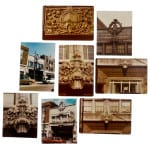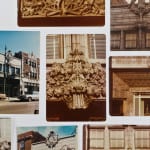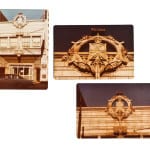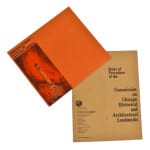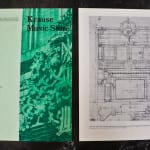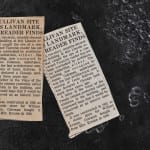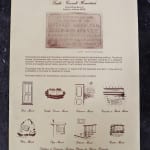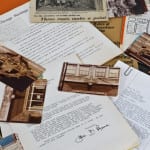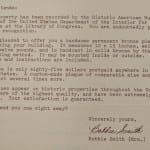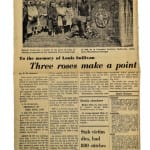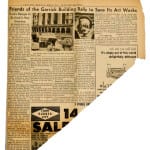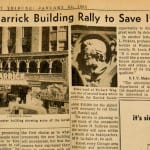documents pertaining to richard nickel, louis h. sullivan, and the krause music store added to bldg. 51 museum
This entry was posted on September 30 2017 by Eric

completed in 1922, the krause music store was the final building commission of notable chicago architect louis h. sullivan, who designed 126 buildings, with the great majority built during his partnership with dankmar adler. the krause music store's facade is bedecked with a remarkable glazed terra cotta treatment, consisting of curvilinear and/or strongly organic design motifs surrounding a deeply setback and centrally located street level plate glass storefront window, flanked by two doors positioned inward. the recessed space is illuminated at night with several incandescent bare bulb fixtures built within terra cotta panels running horizontally above the large plate glass picture window. the building's elaborate facade features two sets of leaded glass windows divided on the second floor by a slightly protruding column with a burst of foliage at the bottom and an oversized cartouche at the very top that exceeds the roofline. the circular-shaped cartouche is punctured with large openings surrounding a centrally located shield bearing the letter "k" for krause.
the krause music store was commissioned in 1921 by william p. krause to serve as a both a music shop and residence, at a total cost of $22,000 dollars. mr. krause chose his neighbor, architect william presto, to design the building. years earlier, presto had worked as a draftsman for louis sullivan. but by 1921, sullivan’s success had faded, as his designs were no longer in demand. so in a reversal of roles, sullivan was asked by his former employee to design what would become the building’s beautiful green terra cotta façade. sullivan, in ill health, living in a rented room and hopelessly insolvent, accepted the offer.
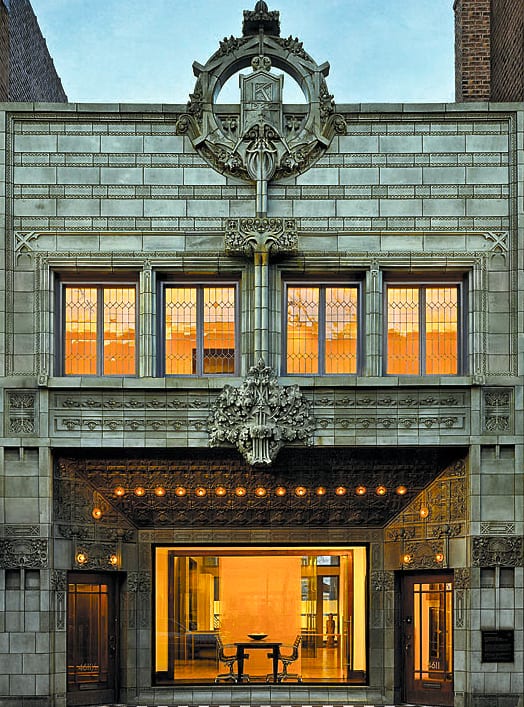
showcasing his genius with terra cotta, sullivan designed the entire façade with ornamentation richly detailed in a marriage between organic and geometric design motifs. the richly ornamented terra cotta was fabricated by the american terra cotta company for a total cost of $3,770 dollars. the building was completed in 1922. the store opened to sell pianos and sheet music, and was a pioneering retailer for the introduction of the radio. tragically, with the onset of the great depression, william krause committed suicide in the family’s apartment on the second floor. his widow rented and eventually sold the building to a funeral parlor. during the next 60 years, the building functioned as a funeral home, undergoing much neglect and alteration. the terra cotta façade was acid washed, which ultimately damaged and lightened its color. the basement was converted into a workspace for embalming the dead.
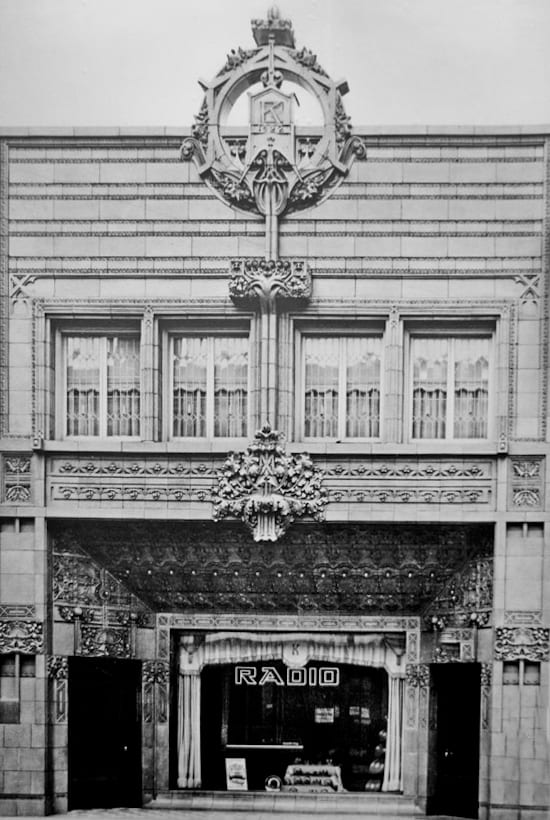
on september 20, 1977, the city of chicago recognized the historic significance of the building and designated the façade as a chicago landmark.
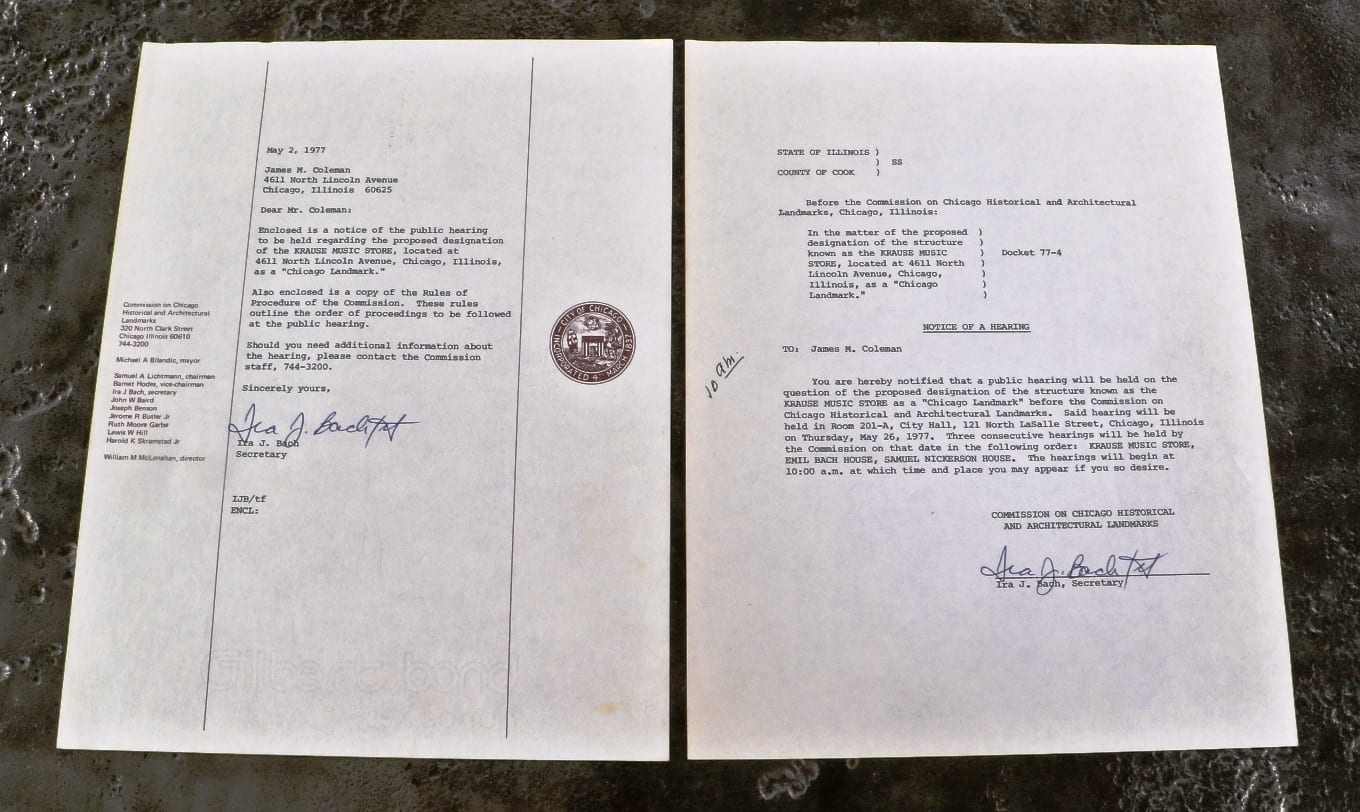
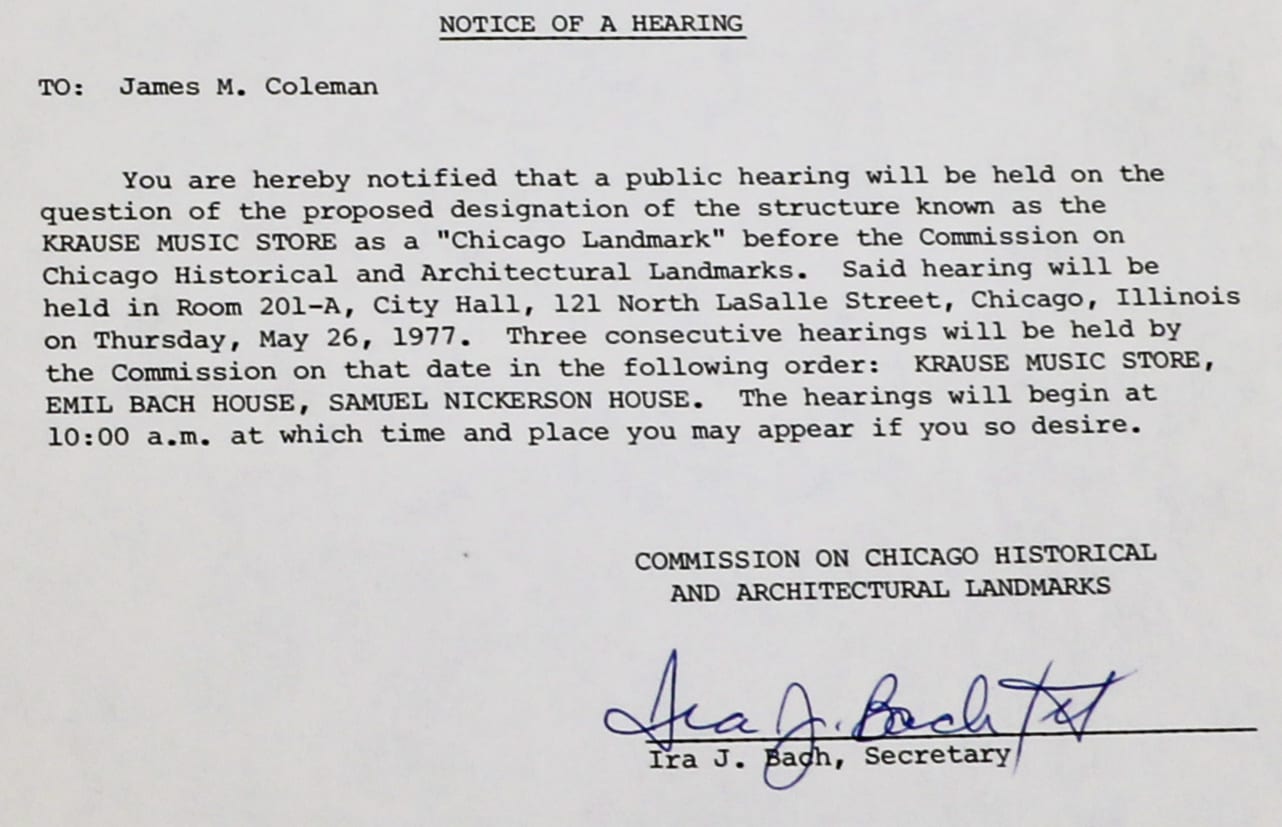
thirteen years later, scott elliott opened klemscott galleries and restored the front of the building to its original appearance. by the turn of the new century, a gift shop called the museum of decorative arts occupied the space. in may 2005, the building was purchased by pooja and peter vukosavich, who painstakingly restored the historic sullivan façade and completed a modern renovation of the main floor for their company offices, studio v design – a marketing communications and design agency. the building is now a serene and elegant space with a meditative “zen” garden, fostering a dynamic environment for creative design. the renovation has won several awards (including the driehaus foundation award and the aia award,) and has attracted media publicity. more than 15 feature stories have been written about the building, including features on npr, chicago tribune, and in timeout chicago. in 2006, through the efforts of peter and pooja vukosavich, the building was placed on the national register of historic places.
additional ephemera includes a richard nickel hand-written note and a newspaper clipping of nickel laying a wreath at louis h. sullivan's grave at graceland cemetery. a year and two days later, nickel's lifeless body was discovered in the rubble of sullivan and adler's chicago stock exhange. he too was buried at graceland, a short distance from sullivan's grave. the additional clipping (and others not photographed for this post) reports on efforts to salvage ornament from the impending demolition of the garrick theater. both john vinci and richard nickel were paramount in overseeing and/or participating in removing both terra cotta facade ornament, along with several sections of decorative plaster from the auditorium.
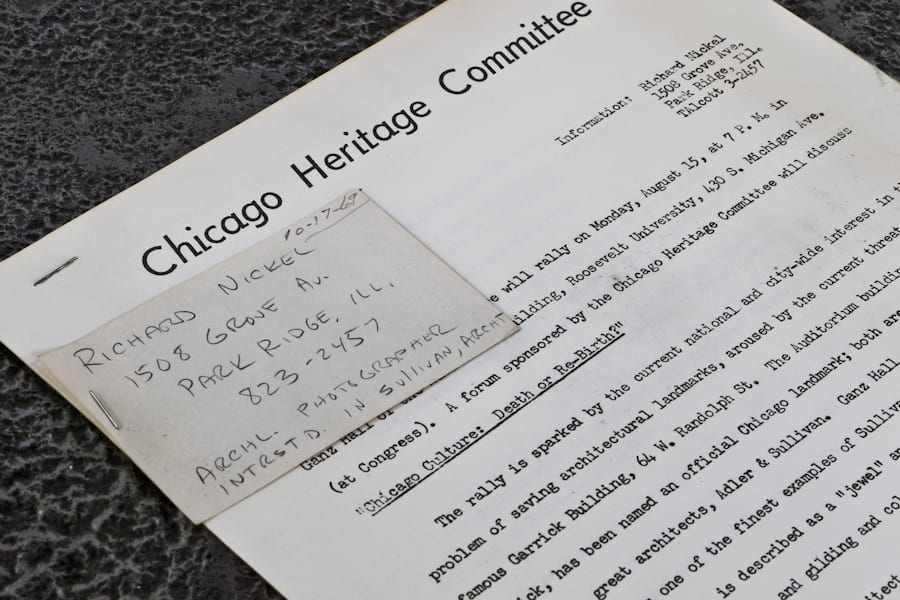
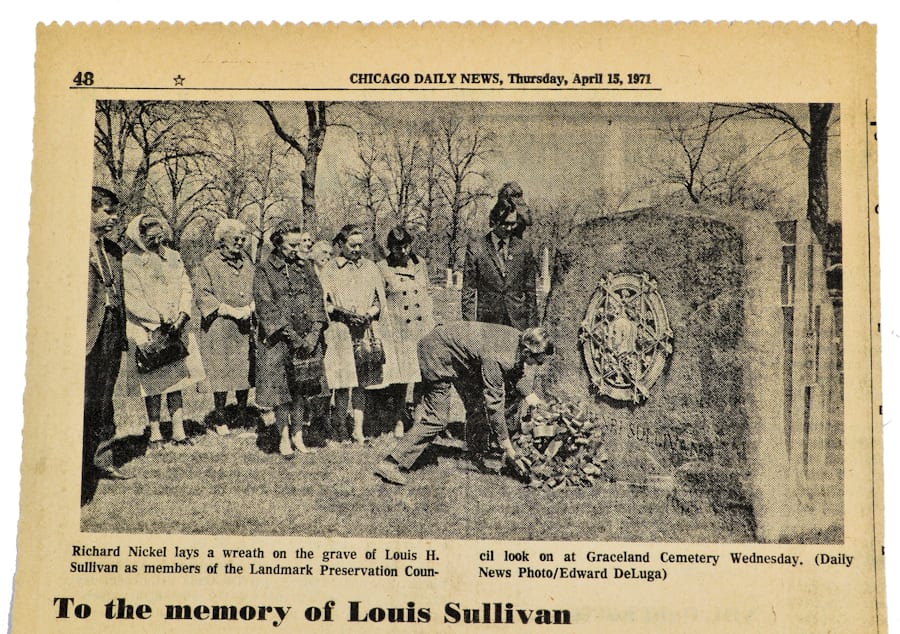
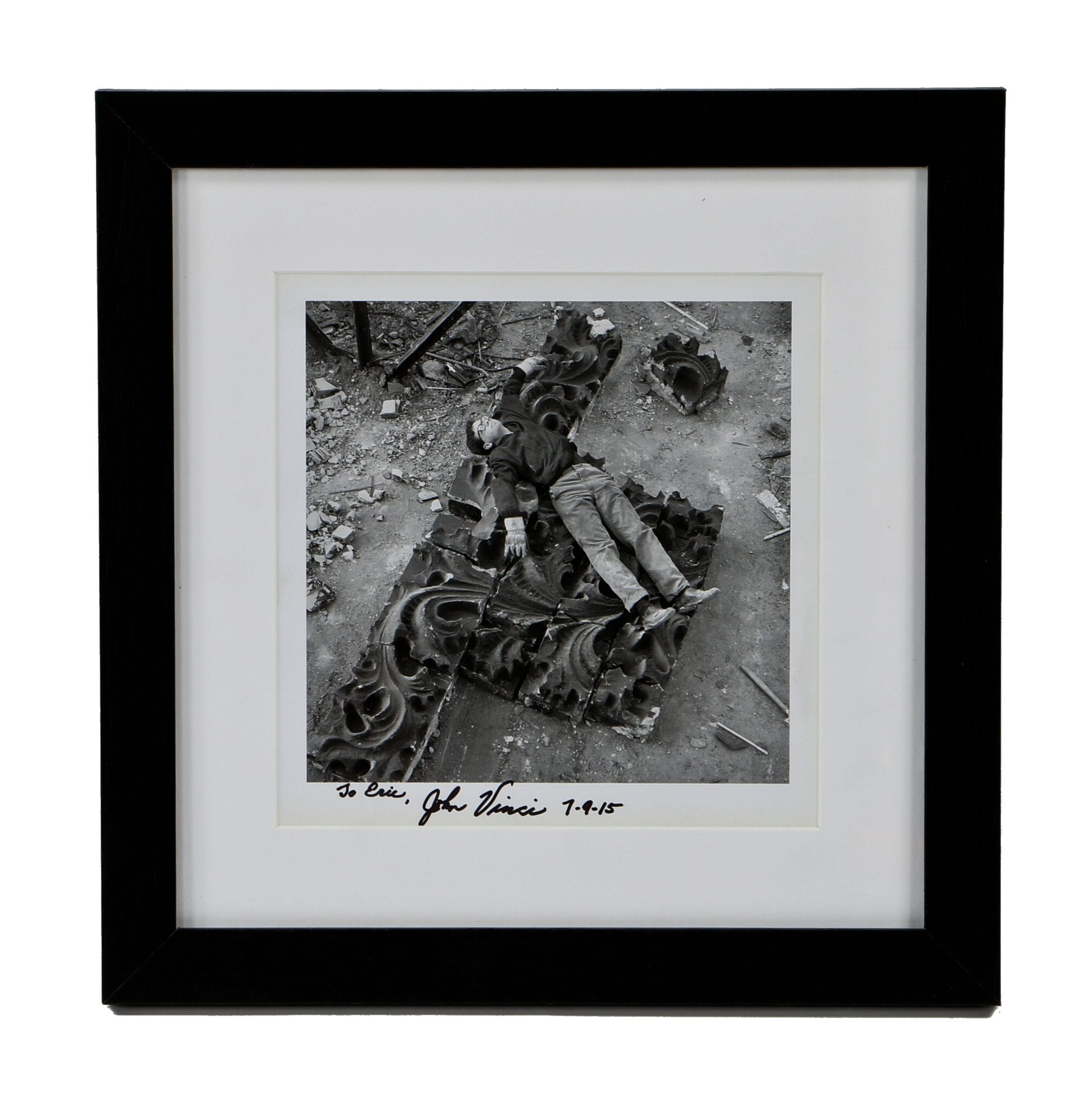
This entry was posted in , Miscellaneous, Bldg. 51, New Products, Events & Announcements, New Acquisitions, Featured Posts & Bldg. 51 Feed on September 30 2017 by Eric
WORDLWIDE SHIPPING
If required, please contact an Urban Remains sales associate.
NEW PRODUCTS DAILY
Check back daily as we are constantly adding new products.
PREMIUM SUPPORT
We're here to help answer any question. Contact us anytime!
SALES & PROMOTIONS
Join our newsletter to get the latest information

